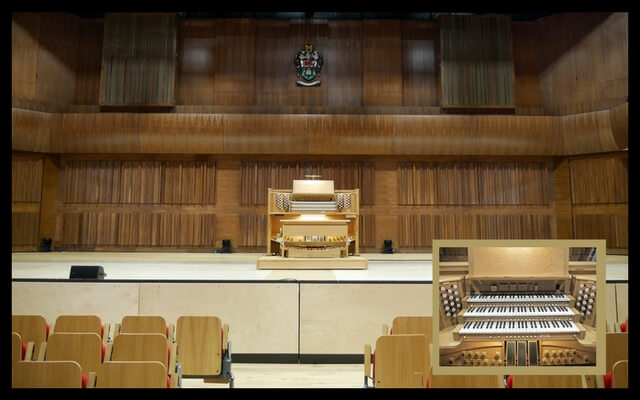Reverberation adds to the experience
Room acoustics strongly affect how we perceive any musical instrument, and this is especially so with the organ. Most often we listen to an organ in a reverberant church space and consequently become accustomed to the signature that reverberation adds to the experience. A large organ without a reverberant acoustic can be poorly integrated and unsatisfying to listen to; indeed Bach is reported to have said that reverberation is the most important stop on the organ.
I recall listening to the opening recital from the Festival Hall of the newly restored organ and wishing there was more bloom in the hall. Even though the reverberation characteristics had been improved in the restored hall, it just sounded wrong to my ears for a large instrument to be playing in what seemed like a small space.
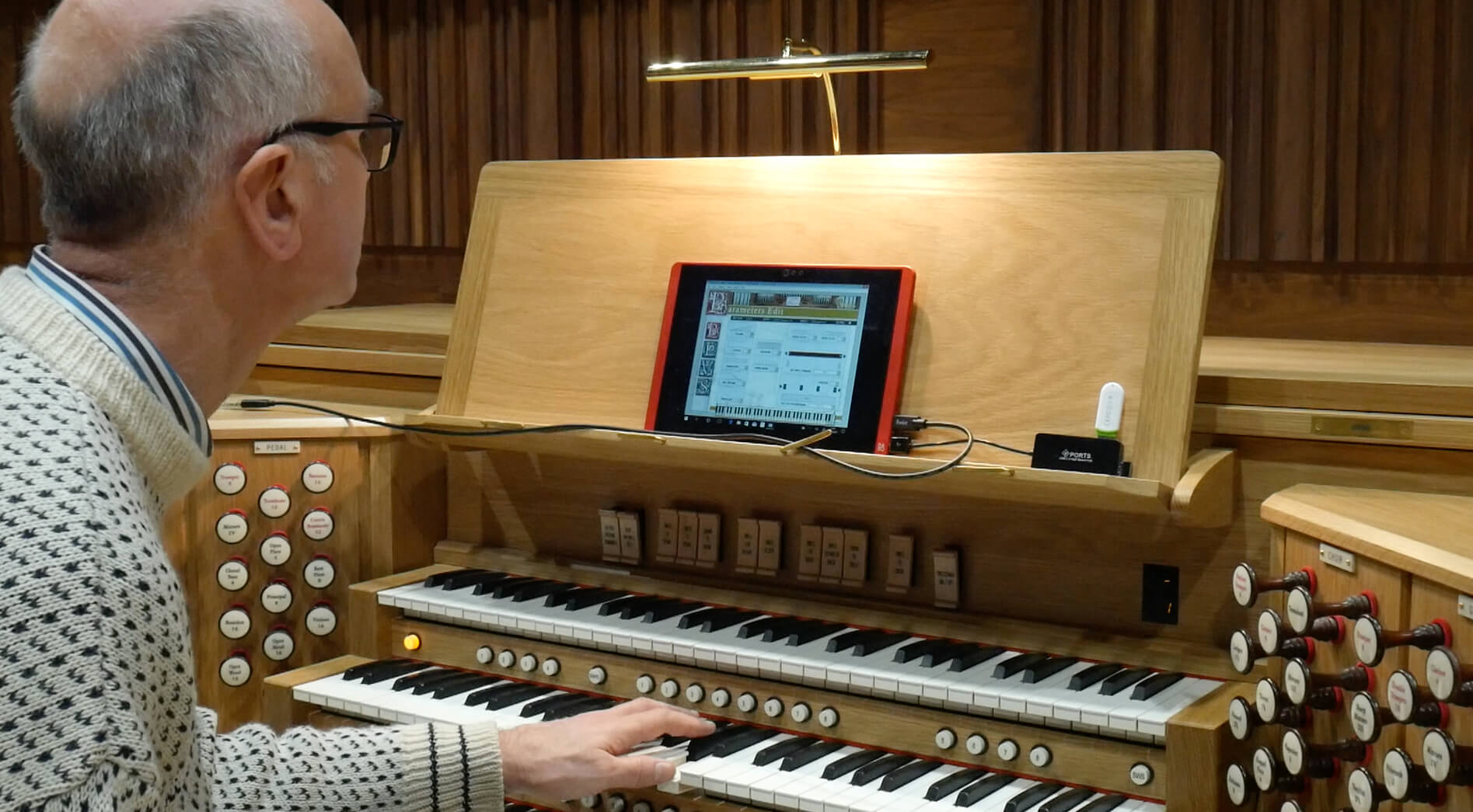
Multi-purpose halls present a challenge when voicing
Multi-purpose halls consequently present pipe and digital organ builders alike with a real challenge to get a pleasing result. Such halls are often built with a compromise (and sometimes variable) acoustic specification that can handle a wide range of different events. Presenting speech clearly is often extremely important, and this requires a shortish reverberation time of no more than about a second. For music it can be hard to make the acoustics sufficiently variable to be long enough for classical music and organ performances, especially when the hall is full. Voicing an organ for such a space was the challenge at Swansea University’s new Great Hall.
As you can see in the installation blog for this instrument, conditions for its installation precluded any serious attempt at voicing and I did not get to hear our work until I returned in September 2016 for the first solo recital use of the instrument. The preceding uses had been for graduation ceremonies — so mainly processional music at the start and finish of the event and some hymns in between.
Our first voicing had not proved bold enough to lead singing in a room of 700 bodies and so the subsequent voicing visits had gradually resulted in ever growing power, to a point that when I returned in September the instrument was too bold as a solo recital organ.
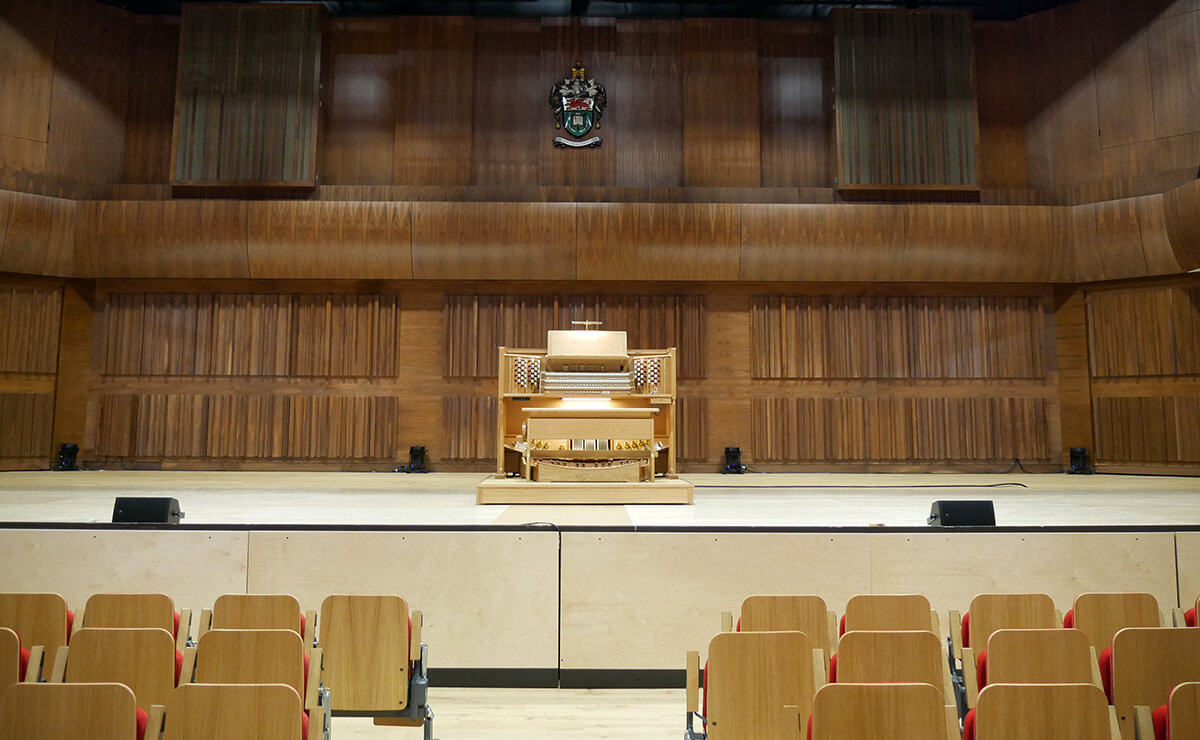
We return for revoicing of our Regent Classic digital organ
Consequently, I offered to return to prepare an instrument setting more suited to recital work. This needed three days set aside and the first opportunity to have the hall for this time did not present itself until February 2017. By then we also had available to us a new audio routing algorithm. This is a polyphonic set up directing notes of a single stop to up to 6 speakers using a sophisticated algorithm that avoids any frequency conflicts arriving at a single speaker.
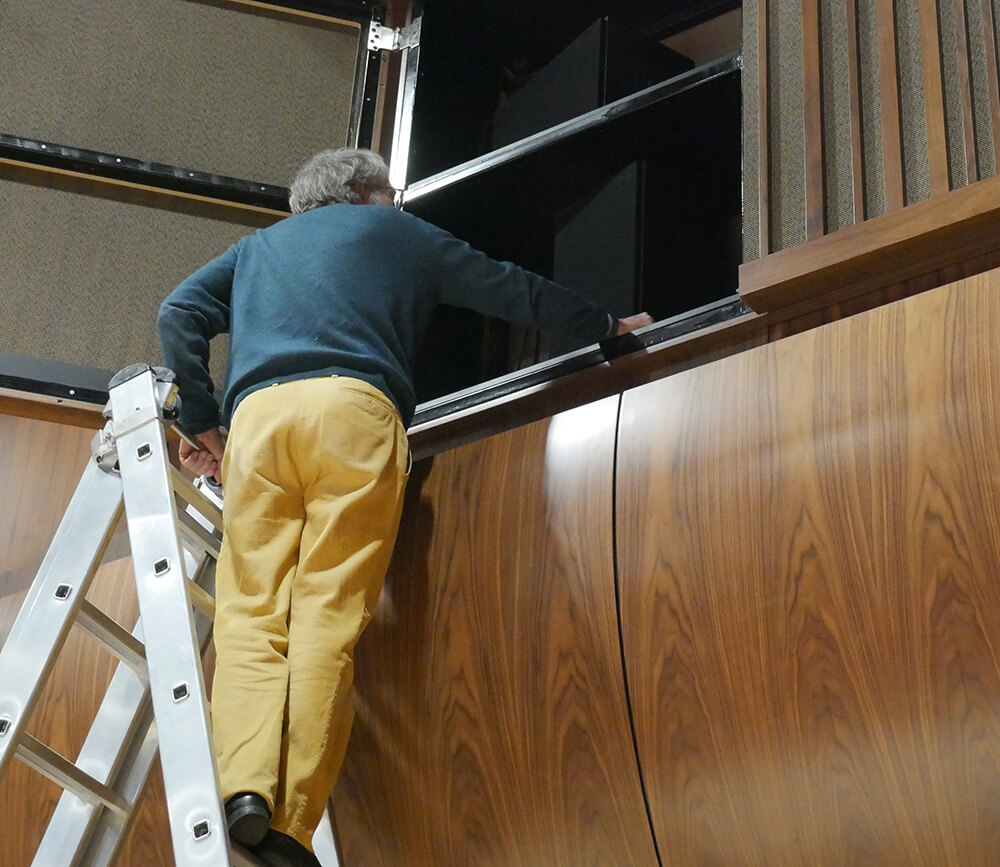
If you, as we do, listen day in day out to digital instruments you will understand that mixture stops and the fifteenths can be the hardest to get to sit well in the chorus. So we focused a lot of attention on to that part of the instrument. We exchanged speakers to provide a softer tone and changed their directional angles and found this had very little effect. The use however of the polyphonic routing of some key voices very quickly created a more pleasing result.
So after a good many hours of work with the obligatory periods to rest the ears we felt we had added a voicing option to the instrument for recital use that would add to the flexibility in a hall where for the most part the organ will be used in an acoustic designed for the spoken word.
It is possible to change these voicing styles quickly at the console, the instrument taking about 2 seconds to move between settings. Whether, under the pressure of imminent performance, the musician, no doubt focused on his piston setting, will remember to add this into his vital pre-performance preparation remains to be seen.
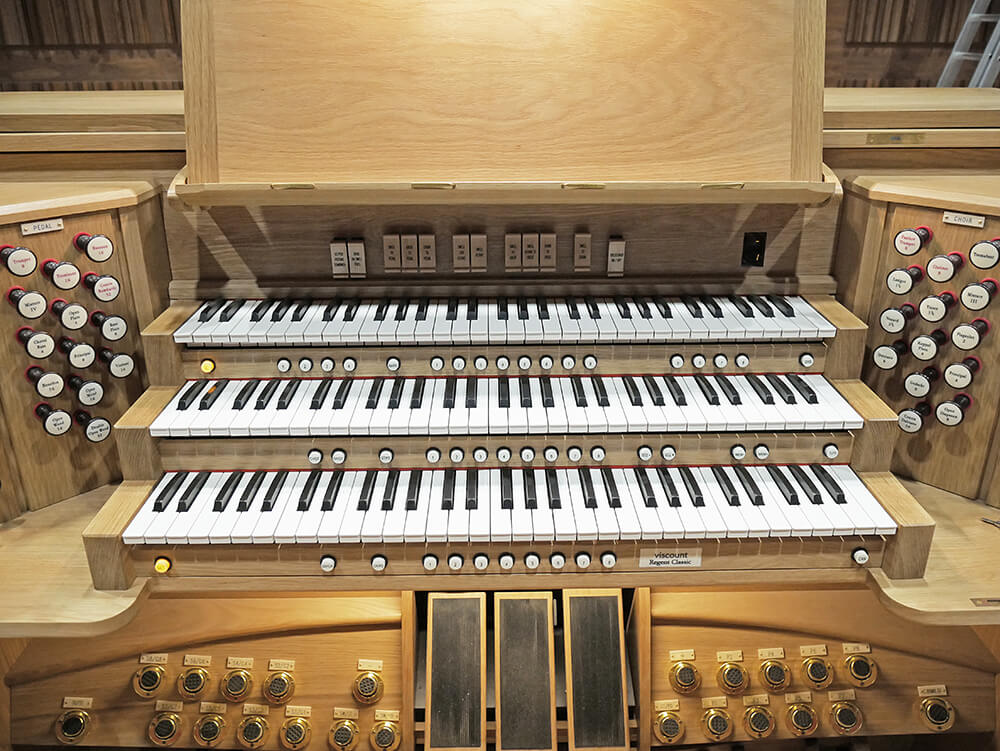
Regent Classic offer many opportunities for adaptation
However back at Regent Classic head office we know the facility is there for this digital organ to be adapted for a public recital. We have set high standards for our work and we know the instruments offer the very best alternative when real pipes are not an option.
This additional voicing challenge had not been anticipated at the time of costing this particular project but we were pleased to do it at our expense so that the instrument can be fully enjoyed in all the roles asked of it.
To find out more about our approach please visit the Voicing & Sound Reproduction page where you will also find a useful video on the topic.
I have had a passion for church organs since the tender age of 12. I own and run Regent Classic Organs with a close attention to the detail that musicians appreciate; and a clear understanding of the benefits of digital technology and keeping to the traditional and emotional elements of organ playing.
